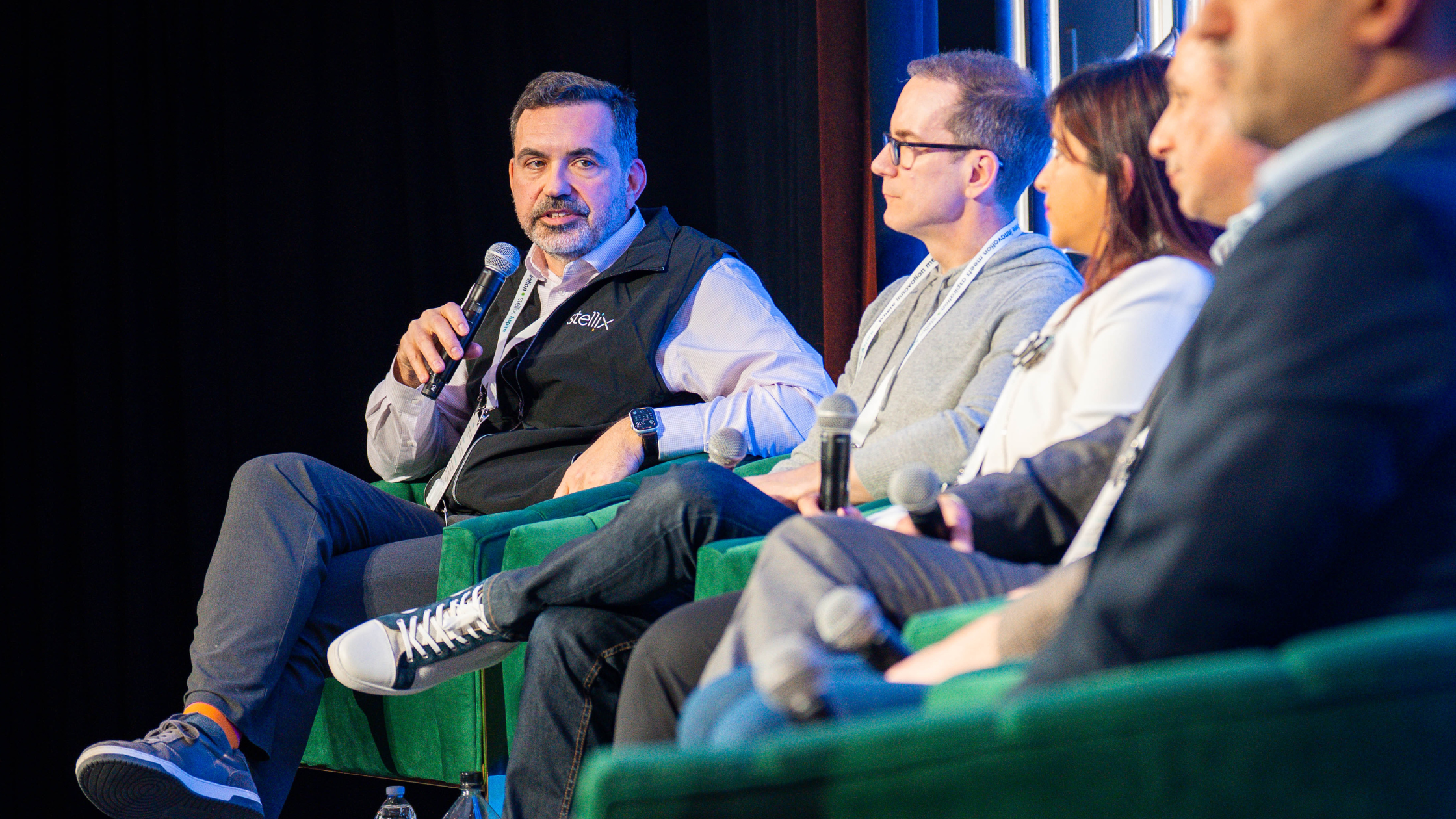
During Aspire 2025, I had the privilege of moderating a conversation that left me feeling not only energized, but deeply optimistic about the potential for AI in life science operations.
It’s not often you get to sit on a stage alongside industry leaders to discuss a pivotal moment in an industry’s trajectory where AI has the potential and momentum to accelerate productivity. But Aspire delivered that moment for me and the other attendees.
Our panelists—Nishtha Jain, Roland Smith, Dave Johnson, Mehdi Sarmady, and Devendra Deshmukh—shared perspectives that were both bold and programmatic. The stakes were clear: how can we leverage AI—in all its forms—not just to improve operations, but to dramatically accelerate patients access to life changing therapies?
What Inspired Me
The conversation started out well grounded in what was possible and continued in that frame throughout the discussion. This wasn’t the disconnect we normally see between AI marketing hype and what is real. The panelists are real-world operators in organizations big and small sharing hard-earned lessons from pioneering new pathways for the industry using emerging technology. As a result, their perspectives were grounded, candid, and refreshingly transparent about the challenges they face. But they also shared moments that revealed powerful glimpses beyond our current horizon.
I was especially struck by what Dave Johnson of Dash Bio said about the importance of pushing science forward in ways humans simply can’t replicate. He described a project that designs cancer vaccines tailored to individual tumors using AI—not a single human in the loop. “That’s not something someone could do by hand,” he said. “It’s just not possible.”
Hearing that reminded us why we’re here: to leverage technology in a way that accelerates breakthroughs and improves lives in ways and at speeds not possible with humans alone. Whether it's reducing the time from molecule to market or improving precision in quality control and regulatory submissions, AI is reshaping what’s possible.
What Made Me Think
A few moments still echo in my mind.
-
On the ROI of AI: “You can’t calculate ROI, if you don’t understand your own cost structure.”, Dave reminded us. Before life sciences can scale AI, we need better visibility into the cost and performance of our own operations. That resonated deeply. At Stellix, we’re building that ourselves internally and helping clients build that operational clarity as part of the path towards AI-readiness.
-
On AI mistakes: Roland Smith offered a compelling analogy: “If you’re just running AI and assuming it’s always right, that’s like hiring people with no job descriptions or performance reviews.” We wouldn’t do that with humans—why would we with AI? We need to think of AI as a judgement-based human, not as a rule-based machine.
-
On human relevance: “If the next crop of companies is all built [with AI augmenting their operations],” Dave asked, “how do you fit in that world?” It wasn’t just a question about roles —it was an existential one. How do you stay competitive with companies that are born with technical and cultural advantages? Evolve or lose market share.
Where We Go From Here
The panel made one thing clear: successful AI adoption won’t come from technology alone. It requires top-down leadership, bottom-up experimentation, alignment across business functions, and most critically—a cultural shift.
Nishtha shared about her company’s efforts to embed AI into everyday tasks—from summarizing meetings to managing regulatory documents—and empowering “AI ambassadors” to coach peers on how they can utilize AI to enhance their approach to work. But her organization is not just coaching, it is challenging the culture to think differently about what roles AI can augment or do instead of humans.
We also heard the sobering truth: most organizations still don’t budget adequately for training. If we want meaningful adoption and culture change, we must fund literacy, communication, and trust.
We can’t afford to wait for perfect solutions. As Roland noted, the pace of innovation is such that if something feels too hard today, it might be obsolete tomorrow. We must build nimble, modular, and auditable systems—ones that evolve as the technology does.
A Call to Action for Life Science Leaders
To my peers in the life sciences: this is our moment to lead in this pivot to our next tier of productivity (beyond automation).
At Stellix, we don’t believe in AI because of the herd mentality. We believe judgement-based AI systems will result in the productivity gains that we have seen from rule-based automation systems. They complement our current set of tools in a way that can get us to better outcomes—a faster, safer, smarter journey from discovery to delivery.
If you’re trying to figure out where to start, here’s my advice:
-
Start small with early adopters, but start now. Find one high-value use case, pilot it, learn and pivot. High-value use cases provide the drive and visibility needed to gain momentum through challenges.
-
Invest in your people. Training isn’t a luxury—it’s a requirement.
-
Challenge the status quo. Augment legacy systems if you cannot replace them. Complement systems thinking with design thinking. What is really required?
-
Embrace the ecosystem. No one company can solve this alone. Network and find partners that are open to working with third parties.
Together, we can make AI real. Not in a hypothetical future, but right now. Let’s shorten timelines, reduce costs, and most importantly—bring life-improving therapies to patients faster.
If you’re ready to explore what that journey looks like for your organization, the team at Stellix is ready to help. Let’s share experiences, co-innovate, and reimagine what’s possible.

